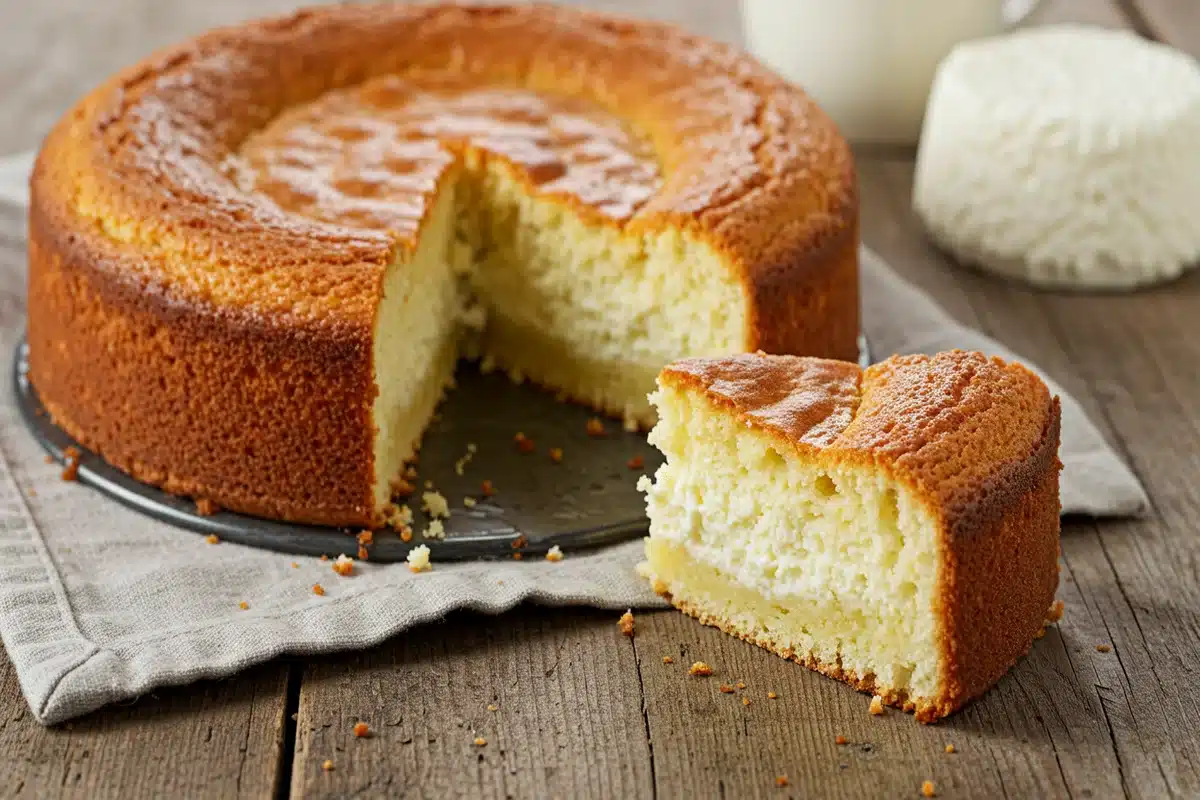Are you wondering is cottage cheese good for baking? This guide explores how using cottage cheese can transform your baked goods. Discover its benefits, tips, and delicious ways to incorporate it naturally into your recipes. Many ask, “is cottage cheese good for baking,” and the answer is a resounding yes!
Unveiling Cottage Cheese in Baking
Cottage cheese is often enjoyed as a snack. However, is cottage cheese good for baking? It naturally enhances the flavor and texture of baked goods. This guide will show you how to use cottage cheese naturally in your recipes, answering the question, “is cottage cheese good for baking,” with practical tips.
The Wonders of Cottage Cheese
Naturally Creamy Texture
Cottage cheese naturally gives a creamy texture to your baked goods. Therefore, it helps create moist and tender cakes and muffins. In addition, it acts as a great substitute for heavier dairy products. When considering, “is cottage cheese good for baking,” remember its unparalleled creaminess.
Naturally Boosts Protein
Is cottage cheese good for baking regarding protein? Indeed, it adds a protein punch to your recipes. Accordingly, this makes your baked goods more filling and nutritious. Furthermore, it’s perfect for those looking to add protein naturally to their diet. So, is cottage cheese good for baking if you need more protein? Absolutely.
Naturally Low in Fat
Compared to other cheeses, cottage cheese naturally tends to be lower in fat. Thus, it offers a lighter option. Nevertheless, it still brings richness to your baking. Therefore, it’s a naturally smart choice for health-conscious bakers. People ask, “is cottage cheese good for baking” if I am trying to limit my fat intake? It certainly can be!
Cottage Cheese: A Naturally Versatile Ingredient
Is cottage cheese good for baking because it’s versatile? Unquestionably, its versatility shines in many recipes. For example, use it in cakes, breads, or even pancakes. Additionally, it blends well with both sweet and savory flavors. Therefore, it naturally fits many culinary creations. This versatility naturally answers “is cottage cheese good for baking” with an enthusiastic yes.
Cottage Cheese in Cakes
Adding cottage cheese naturally results in moist and tender cakes. Because it helps retain moisture, your cakes stay fresher longer. Also, it can cut down on the amount of butter or oil needed. For cakes, “is cottage cheese good for baking?” Yes, and it can even make them healthier.
Cottage Cheese in Breads
Using cottage cheese naturally in bread recipes makes the bread softer. Chiefly, it enhances the crumb texture. For example, cottage cheese naturally works well in yeast breads and quick breads alike. “Is cottage cheese good for baking” when it comes to bread? The soft texture is undeniable.
Cottage Cheese in Muffins
Is cottage cheese good for baking muffins? Generally, cottage cheese naturally adds a lovely moistness to muffins. Comparatively, it also gives them a slight tang. Hence, your muffins will be naturally more delicious and satisfying. People often wonder, “is cottage cheese good for baking” particularly when making muffins? The answer is it enhances both flavor and texture.
Baking with Cottage Cheese: Step-by-Step
Preparing Cottage Cheese Naturally
First, drain excess liquid from the cottage cheese. Specifically, this prevents your batter from becoming too watery. Equally, you might want to blend it for a smoother consistency. So if you are asking is cottage cheese good for baking prepare well!
Incorporating Cottage Cheese
Next, add the cottage cheese naturally to your wet ingredients. Particularly, make sure it’s well combined. Comparatively, this will ensure an even distribution in your baked goods. To maximize the benefits when you are looking at is cottage cheese good for baking, combine it thoroughly.
Adjusting Recipes Naturally
Third, you might need to adjust the amount of liquid in your recipe. For instance, if the batter looks too wet, reduce other liquids slightly. Because cottage cheese adds moisture, this adjustment is often needed. When it comes to “is cottage cheese good for baking“, remember to adjust your recipes accordingly.
Delicious Recipes Featuring Cottage Cheese
Naturally Cottage Cheese Pancakes
These pancakes are fluffy and protein-rich naturally. Specifically, the cottage cheese adds a subtle tang that makes them extra special. Accordingly, serve them with your favorite toppings. Many ask “is cottage cheese good for baking” pancakes, try this recipe!

Looking for more “Delicious Cottage Cheese Recipes? Visit Allrecipes.com for a variety of tasty ideas.
Cottage Cheese Cheesecake
Is cottage cheese good for baking a cheesecake? Basically, cottage cheese can make a lighter cheesecake. Hence, the texture will be creamy and delightful. Therefore, this recipe is a must-try.
Cottage Cheese Bread
Cottage cheese naturally adds a soft texture and subtle flavor to bread. Another benefit is that this bread stays moist for days. For example, enjoy it toasted with butter or as a sandwich bread.

Tips for Baking with Cottage Cheese Naturally
Choose the Right Cottage Cheese
Generally, full-fat or low-fat cottage cheese works best. Indeed, the fat content affects the final texture. Explicitly, choose what suits your dietary preferences naturally.
Blend for Smoothness
If you prefer a smoother texture, blend the cottage cheese before adding it. Especially, this is useful for cakes and cheesecakes. Chiefly, blending ensures no lumps remain.
Storage Tips Naturally
Generally, store baked goods with cottage cheese in the refrigerator. Thus, this helps maintain freshness naturally. Furthermore, they usually last for about 3-4 days.
The Nutritional Benefits of Cottage Cheese in Baking
Naturally High in Protein
Cottage cheese is an ingredient naturally high in protein. Therefore, it naturally helps you feel full longer. Moreover, it supports muscle health.
Naturally Rich in Nutrients
Specifically, cottage cheese naturally contains nutrients, like calcium and B vitamins. Comparatively, these are essential for overall health. Therefore, baking with it adds nutritional value.
Low in Carbohydrates Naturally
Is cottage cheese good for baking for those limiting carbohydrates? Essentially, it’s low in carbohydrates naturally. In fact, this makes it a good option for lower-carb baking. Additionally, it can help maintain stable blood sugar levels.
Addressing Common Concerns
Lactose Intolerance Naturally
Many people wonder about lactose. If you’re lactose-intolerant, try lactose-free cottage cheese naturally. Therefore, you can still enjoy baked goods made with it. However, always check the label for additives.
Texture Issues Naturally
If you don’t like the texture of cottage cheese naturally, blend it until smooth. Because this eliminates any lumps. Especially, blended cottage cheese naturally works well in delicate recipes.
Balancing Flavors Naturally
Cottage cheese naturally has a mild tang. Explicitly, balance this with sweeter or richer ingredients. For instance, add vanilla extract or a touch of honey.
Naturally Enhancing Your Baking with Cottage Cheese
Sweet Variations Naturally
Explore sweet variations naturally, like adding berries or chocolate chips. Indeed, these flavors complement naturally cottage cheese well. Furthermore, they make your baked goods more appealing.
Savory Variations Naturally
Consider savory variations naturally, such as herbs and spices. Comparatively, cottage cheese works well with dill, chives, or garlic powder. Eventually, these add a delightful twist to your baking.

Pairing with Fruits Naturally
Pair cottage cheese naturally with fruits like apples, peaches, or pears. Another pairing naturally that works is berries. Unquestionably, the combination is refreshing and delicious. Specifically, these pairings naturally elevate the flavor profile.
Making the Most of Cottage Cheese
Elevating Everyday Recipes Naturally
Use cottage cheese naturally to elevate your everyday recipes. Moreover, this adds moisture, protein, and nutrients. Therefore, even simple dishes become special.
Cost-Effective Naturally
Cottage cheese naturally is a cost-effective ingredient. Specifically, it’s an affordable way to add nutritional value. Comparatively, this is an excellent option for budget-conscious bakers.
Boosting Nutrient Density Naturally
By using cottage cheese, you boost the nutrient density of your baked goods. Besides, nutrients naturally such as calcium and protein contribute to a healthier diet.
The Future of Baking with Cottage Cheese
Increasingly Popular Naturally
Cottage cheese is increasingly popular in baking. Chiefly, more people are discovering its benefits. Additionally, the trend towards healthier baking will encourage its use.
Culinary Innovations Naturally
Expect more culinary innovations featuring cottage cheese naturally. Meanwhile, chefs and bakers will find new ways to use it. Specifically, they’ll explore its versatility naturally.
Conscious Consumers Naturally
Conscious consumers are seeking healthier options. Conversely, cottage cheese naturally fits this demand perfectly. Therefore, its popularity will continue to grow.
Is Cottage Cheese Good for Baking?: Final Thoughts
So, is cottage cheese good for baking? Undoubtedly, yes! Finally, this versatile ingredient naturally can transform your baked goods. Because of the naturally creamy texture, boosted protein, and versatile naturally uses it provides, you should give it a try. Whether it’s cakes, breads, or muffins, cottage cheese naturally enhances them all. Therefore, start baking with cottage cheese today!
Frequently Asked Questions (FAQs):
Does cottage cheese melt when you bake it?
Generally, cottage cheese does not fully melt in baking. Instead, it softens and blends with the other ingredients. However, high heat can cause it to separate slightly.
What does cottage cheese do in baking?
Cottage cheese naturally adds moisture and a creamy texture to baked goods. Additionally, it boosts the protein content. Therefore, it’s used to improve both texture and nutritional value.
Can you use cottage cheese instead of cream cheese in baking?
Yes, naturally, you can use cottage cheese instead of cream cheese. Because it is an ingredient naturally with similar properties, Comparatively it will give a lighter texture. Indeed, you might need to adjust the recipe slightly for moisture.
Can you substitute cottage cheese for butter in baking?
In some recipes, naturally, you can substitute cottage cheese naturally for butter. However, it works best in recipes where moisture is needed. Hence, this naturally reduces the fat content. Specifically, consider blending it for a smoother consistency.
Conclusion
In conclusion, cottage cheese is good for baking. It adds moisture, protein, and a unique texture. For inspiration, check out this cottage cheese cookie dough recipe to see how versatile it can be. It’s very adaptable in both sweet and savory items. Therefore, it’s worth exploring in your next baking experiment. Indeed, it may become a new favorite ingredient.


1 thought on “Is Cottage Cheese Good for Baking?”